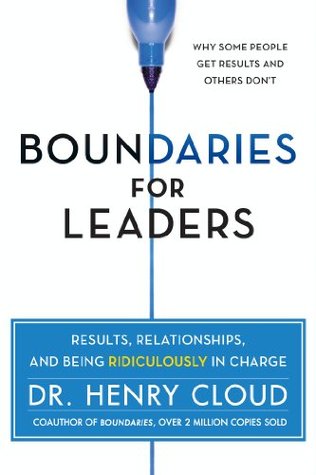More on this book
Community
Kindle Notes & Highlights
by
Henry Cloud
Read between
August 10 - August 23, 2021
irritated tone and harsh words could put his direct reports into a threat situation
people don’t leave jobs—they leave bosses.
how we view others, either positively or negatively, significantly affects goal-oriented behavior.
There are two human drives. One is connection and the other is aggression.
Everything we do is either relational or goal directed—or, ideally, both. Basically, we are “lovers and workers.”
flounder
give people the direction, structure, and accountability that drive good energy, but to do it in a way that does not create stress. And to do that, you have to watch your “tone.”
Hard on the Issue, Soft on the Person
As a leader, you also have to worry about another problem. You have to pay attention to not only what’s going on inside your own head but also what’s going on in the heads of the people who work for you—what beliefs, experiences, and emotions live in their attics, so to speak—apart from how you behave.
“transference,” whereby people experience authority figures in the present as if they were authority figures from their personal pasts.
You walk away from the interaction thinking you’ve given honest feedback while the other person walks away thinking you are a mean boss.
be aware of the fact that as a leader, your position carries much more psychological and emotional weight than you know. People want to please their leaders; they don’t want to let you down. As a result, they can often hear criticism in ways that you never intended, and that adds to the complexity of your job as a leader.
the extra weight that a leader’s voice carries is that even a modest dose of coaching and constructive feedback, delivered in a positive tone, can bring about great change in people.
Talk both about the bad things that will happen if we don’t get with it, and the good things that will happen if we do.
People need to know that you are going to be “for” them, even when they don’t do well.
knowing that failing was OK made her able to succeed.
the security of that relationship freed her up to just think about what she was doing, and to do what she was focused on doing.
she was free to use every mistake as a learning opportunity and free to do the best she could at any moment.
people need a culture in which leaders drive people to “get better,” instead of driving them to be perfect or avoid making mistakes.
the negative threat that creates a fight-or-flight response is not good for performance.
It deactivates the parts of the brain that we want to be awake and energizes the reptilian “threat” brain. In order for changes in behavior to occur, leaders must keep “fight-or-flight” stimuli to a minimum. Then they must add something else. That “something” is a combination of “attention” and “insight.”
People need safe spaces to observe.
Why does connection matter so much in human performance? And how can leaders create it and enhance it?
relationships change brain chemistry.
The first element necessary for unity and connection to occur is simple but profoundly missing in many leadership scenarios: the right kinds and the right amounts of time together.
Both quality and quantity matter.
It makes you wonder whether the Beatles should have stuck it out.
Do I have structured times where my people know we are getting together in a way that creates connectedness?
How much getting together do we need? And what is the right time interval before you need to do it again? If you wait too long, you lose what was gained in the last connection and you are not building on it. For these kinds of meetings, continuity is essential.
you are having enough structured time together to drive connection.
Creating a climate that allows for vulnerability and high levels of trust builds connection. For connection to take place, people have to get real with one another. And that assumes that you have done the work to build trust. These kinds of meetings also get them in the mode of feeling safe, not fearful or defensive.
creating connections is another form of boundary setting. You are setting a positive boundary, or structure, to form unity. And you are setting a very firm boundary against disconnection and fragmentation.
some of those ingredients that build connected unity:
Shared Purpose:
Awareness:
“No one is talking about the real issues that we need to talk about.”
“compartmentalized awareness,” which by definition brings fragmentation. To connect with you, I need to be aware of you and what you are dealing with, and you with me.
Nonverbal Cues:
Collaboration:
Coherent and Relevant Narrative:
When they got together producing the story, they were able to see the drama and plot points in the company’s narrative, and they realized two things: first, how they had gotten to where they were now (seeing that it all made sense), and second, that it was up to them to write the next part of the story.
Conflict Resolution:
to create unity, sometimes we have to get right into the hard stuff, the things that people are really upset about.
Emotional Regulation:
Emotional Reflection:
Emotional Repair:
Listening:
Before you try to move people to your position, make sure they feel that you understand where they are coming from, what they are feeling, and what they are dealing with. If they do not feel that you understand their reality, your smart answer is not going to have any validity with them. Understand first. Listening is the glue that makes all of the rest of this work.
The takeaway lesson is this: take someone who “can’t” but thinks he can, and compare him to someone who “can” but thinks he can’t. The positive thinker wins every time.


